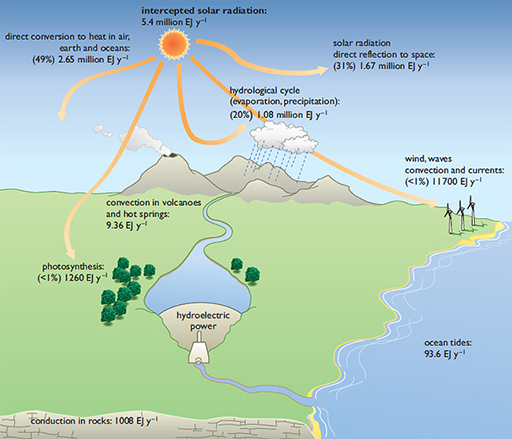3 Renewable energy from the Sun
Have a look at Figure 1, which summarises the origins and magnitudes of the Earth’s renewable energy sources. Clearly, their principal source is solar radiation.
The Sun radiates huge quantities of energy into the surrounding space, and the tiny fraction intercepted by the Earth’s atmosphere 150 million kilometres (km) away is nonetheless around 5.4 million Exajoules (EJ) per year. About one third of this is radiated back to space, but this still leaves around 3.8 million EJ per year available for use on Earth, which is equivalent to about 8,000 times humanity’s present rate of use of fossil and nuclear fuels.
The Sun’s radiation comes from nuclear fusion reactions between hydrogen atoms in its very hot interior. However, this very high temperature is not due to nuclear fusion. Rather, the radiation pressure from nuclear fusion prevents the Sun from getting hotter! The Sun should continue to radiate in this way for another five billion years.

Two non-solar renewable energy sources are also shown in Figure 1. One is the motion of the ocean tides, principally driven by the gravitational pull of the Moon, the source of tidal energy. The other is geothermal energy from the Earth’s interior, which manifests itself in heat emerging from volcanoes and hot springs, and in heat from hot rocks.
